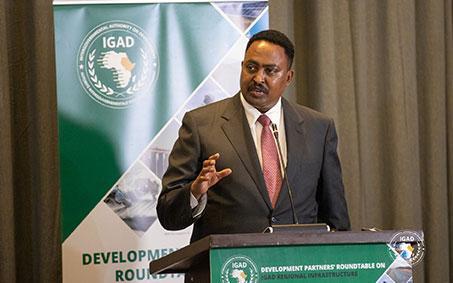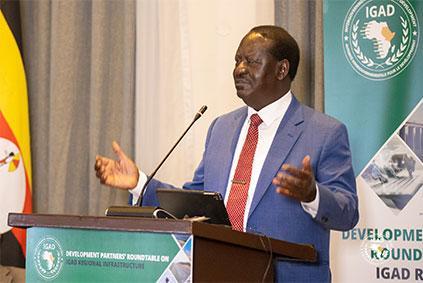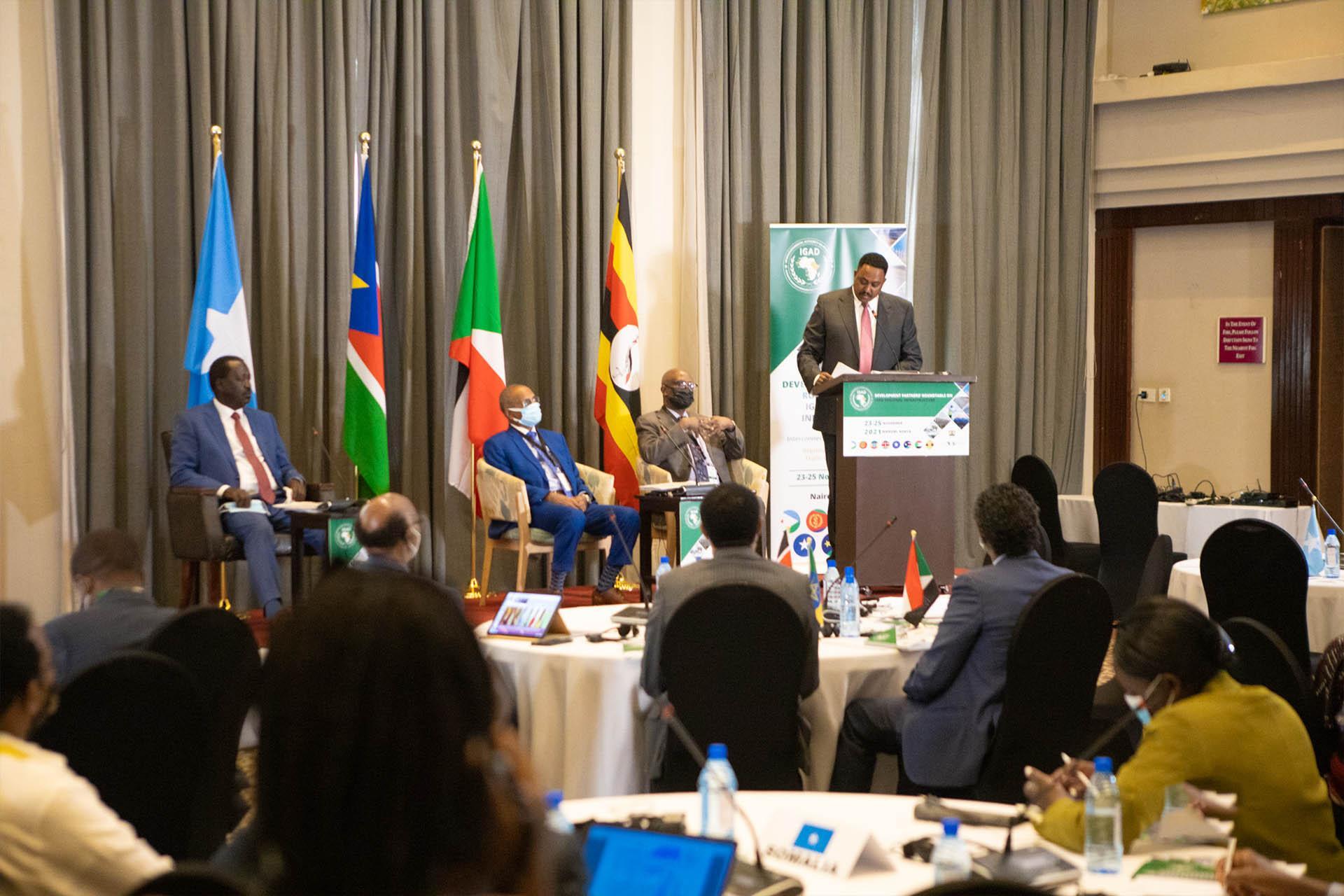November 26, 2021 (NAIROBI, Kenya): The roundtable conference to support the implementation of the IGAD Regional Infrastructure Master Plan was concluded in Nairobi. The delegation, which included representatives from both the governmental and business sectors, underlined the significance of a regional approach for their economic development.
 “More is lost by not investing in infrastructure, then it would cost us to spend on it,” said the Executive Secretary of IGAD, H.E. Dr. Workneh Gebeyehu told the participants. “This is because after Peace and Security, the lack of infrastructure is the second most serious barrier to trade and development.”
“More is lost by not investing in infrastructure, then it would cost us to spend on it,” said the Executive Secretary of IGAD, H.E. Dr. Workneh Gebeyehu told the participants. “This is because after Peace and Security, the lack of infrastructure is the second most serious barrier to trade and development.”
The masterplan aims to reduce intraregional and intercontinental trade barriers by identifying a pipeline of transboundary infrastructure projects that are bankable and attractive to investors. These projects will relieve capacity constraints on IGAD’s trade agenda. With this masterplan, Member States can collaborate and pool resources to implement high-impact regional infrastructure projects.
 “Delivery of infrastructure on a regional scale remains a sure bet to spread trade and manufacturing that creates job. Let us think on regional and continental scale,” said The African Union High Representative for Infrastructure Development, H.E., Raila Odinga, ” We must find ways to maximize the synergies among our state and the subregional bodies to speed up regional connectivity. This is especially important in the area of financing of regional infrastructure projects, which appears to be a problem.”
“Delivery of infrastructure on a regional scale remains a sure bet to spread trade and manufacturing that creates job. Let us think on regional and continental scale,” said The African Union High Representative for Infrastructure Development, H.E., Raila Odinga, ” We must find ways to maximize the synergies among our state and the subregional bodies to speed up regional connectivity. This is especially important in the area of financing of regional infrastructure projects, which appears to be a problem.”
The 11th IGAD Summit of Heads of State and Government, held in 2006, recognized the importance of infrastructure projects as a vehicle for regional integration and as a critical spur for IGAD Member States’ economic growth and development. In 1995, the leaders agreed to expand cooperation in infrastructure development, particularly in communications, energy, land, air, and sea transportation, as well as harmonization, coordination, and joint development of the region’s maritime, air, and land transportation to maximize the flow of goods and services.

